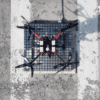Researchers Design Spider-Inspired Sensors for Autonomous Drones
Technology innovation to enhance the “smartness” of AI systems and drones is being attempted by Purdue University researchers who are building spider-inspired sensors into the shells of autonomous drones and cars so that they can detect objects better. The research, titled “Filtered Mechanosensing Using Snapping Composites with Embedded Mechano-Electrical Transduction“, is published in the current issue of the journal ACS Nano.
Andres Arrieta, an assistant professor of mechanical engineering at Purdue University says Drones and AI systems with “spidey sensors” might actually detect and avoid objects better, because they would process sensory information faster.
Better sensing capabilities would enable drones to navigate in dangerous environments and for cars to prevent accidents caused by human error. Purdue researchers have built sensors inspired by spiders, bats, birds and other animals, whose actual spidey senses are nerve endings linked to special neurons called mechanoreceptors.

In nature, ‘spidey-senses’ are activated by a force associated with an approaching object. Researchers are giving autonomous machines the same ability through sensors that change shape when prompted by a predetermined level of force. (ETH Zürich images/Hortense Le Ferrand)
The research team comprised Hortense Le Ferrand, Andre R. Studart, Andres F. Arrieta and the Purdue University, West Lafayette, ETH Zürich, and Nanyang Technological University, Singapore.
Arrieta, whose lab applies principles of nature to the design of structures, ranging from robots to aircraft wings says, “Nature doesn’t have to collect every piece of data; it filters out what it needs.” Many biological mechanosensors filter data – the information they receive from an environment – according to a threshold, such as changes in pressure or temperature.
A spider’s hairy mechanosensors located on its legs detect web vibration frequencies associated with prey or a mate and generate a reflex in the spider making it react very quickly. A lower frequency, such as that of dust on the web, goes undetected because it’s unimportant to the spider’s survival.
Researchers wanted to integrate similar sensors into the shell of an autonomous machine, such as an airplane wing or the body of a car. The researchers demonstrated in a paper published in ACS Nano that engineered mechanosensors inspired by the hairs of spiders could be customized to detect predetermined forces. In real life, these forces would be associated with a certain object that an autonomous machine needs to avoid.
Purdue researchers designed their sensors to not just sense and filter at a very fast rate but also compute, sans power supply and to use these on/off states to interpret signals. An intelligent machine would then react according to what these sensors compute.
Arrieta said that the sensor material is designed to rapidly change shape when activated by an external force. Changing shape makes conductive particles within the material move closer to each other, which then allows electricity to flow through the sensor and carry a signal. This signal informs how the autonomous system should respond. This work is financially supported by ETH Zürich and Purdue University, and aligns with Purdue’s Giant Leaps celebration, as part of Purdue’s 150th anniversary.
The scalability and applicability of these low-power sensors to a wide range of material systems are avenues for the fabrication of load-bearing structures that are able to sense, compute, communicate, and autonomously adapt in response to external magneto-mechanical stimuli.























